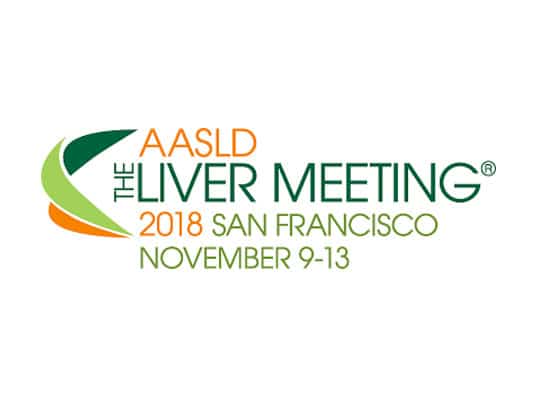American Association for the Study of Liver Diseases (AASLD) Annual Meeting (2018)
Authors: Bingqiong Wang, Yameng Sun, Jialing Zhou, Xiaoning Wu, Shuyan Chen, Yiwen Shi, Shanshan Wu, Xiaojuan Ou, Jidong Jia and Hong You
Liver Research Center, Beijing Friendship Hospital, Capital Medical University, Beijing Key Laboratory of Translational Medicine in Liver Cirrhosis, National Clinical Research Center of Digestive Diseases, Beijing, China
Background: Sampling variability remains to be one of the limitations of liver biopsy in the assessment of liver fibrosis. qFibrosis has been demonstrated to be less sensitive to sample size in the evaluation of liver fibrosis. We aimed to evaluate the diagnostic value of this quantitative method in short liver biopsy samples in chronic hepatitis B (CHB) patients.
Methods: According to the length of original biopsy samples, all samples can be categorized as followed: “≤0.5 cm” group (24 cases), “0.5-1.0 cm” group (140 cases), “1.0-1.5 cm” group (201 cases), “≥1.5 cm” (172 cases). Liver biopsy samples with length ≥1.5 cm were used to reconstruct the virtual biopsies of different sizes between 0.5- 1.5cm. qFibrosis score was measured for each original and virtual biopsy independently. The consistency and deviation of qFibrosis were calculated in each virtual biopsy against the original biopsy. ΔqFibrosis was defined as absolute difference of qFibrosis between original biopsy and virtual biopsy.
Results: In our real-word practice, biopsy samples with length between 0.5 and 1.5cm account for 94.3% (341/365) short biopsy. qFibrosis increased significantly with fibrosis stage in “≥1.5 cm” group, “1.0-1.5 cm” group and “0.5-1.0 cm” group (γs=0.720-0.729, all P < 0.05). Then 334 virtual biopsy samples were reconstructed from 172 qualified biopsies. The intraclass correlation coefficient for “0.5-1.0 cm” group was 0.92 (95% CI 0.90-0.94), “1.0-1.5 cm” group was 0.95 (95% CI 0.93-0.96), suggesting both “0.5-1.0 cm” group and “1.0-1.5 cm” group could achieve an excellent consistency with qFibrosis in “≥1.5 cm” group. There was no significant difference of ΔqFibrosis between “0.5-1.0 cm” group and “1.0-1.5 cm” group (0.31 [95%CI 0.28-0.35], 0.25 [95%CI 0.22-0.29], respectively, P > 0.05).
Conclusion: qFibrosis showed a good consistency between short biopsies and qualified biospies, suggesting it was relatively accurate in the evaluation of CHB- related liver fibrosis in short samples longer than 0.5 cm.

